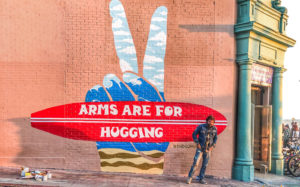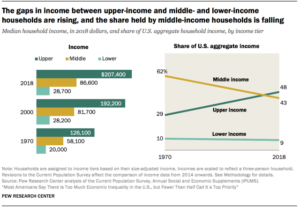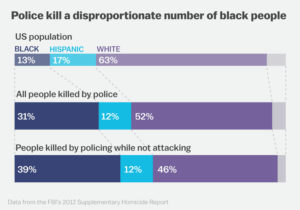Social Issues: Society’s Dualities
Although society is a place for individuals to come together, it often poses as a foundation for many social issues to progress. Despite having come a long way in certain regards, many still suffer negative experiences on a daily basis. There are complex issues that affect individuals; however, three of the most overarching social issues experienced today are economic inequality, gender inequality, and racial inequality. Without solving these three issues, society may never be able to rise above its own constraints.

Economic inequality is indicative of a failing financial and economic system. Beginning at a young age, most individuals dream of acquiring wealth and a secure financial status. Despite the high frequency of the dream, it is accomplished by very few. The economic disparity between individuals is seen on a routinely basis, and it is especially magnified in today’s climate. I want to choose this issue because it affects every part of the community, and it is so easily seen within the community. I also want to choose this because it is a crucial matter that prevents individuals from moving upward in society. In fact, “People in the lower rungs of the economic ladder may experience diminished economic opportunity and mobility in the face of rising inequality.”^1 There are billionaires such as Jeff Bezos while there are children in impoverished cities who are unable to attend school or know where their next meals are coming from. With the increasing use of social media, one is able to see the widening gap between social classes: influencers typically impact younger generations and allow for the gap to deepen. For example, using companies such as Amazon only adds to the inequality experienced by millions. In order to conduct deeper research, the two aspects I would like to focus on is education to see how financially disadvantaged individuals are even more disadvantaged because of society’s opportunities being set against them. I would also like to focus on the rapid wealth that the rich are emassing, “The wealth gap between America’s richest and poorer families more than doubled from 1989 to 2016.”^2 I can include some historical context to compare whether the gap has widened or narrowed over time as well as analyzing the factors in that contributed to the issue. Statistics are readily available that can help me research this issue.

While progress has been made towards gender equality, society is a long way from attaining equality. Women are inherently disadvantaged compared to men in society. Still, however, genders apart from women experience discrimination in more oppressive forms. This issue widely affects the community because as more people gain the confidence to live life as authentic as possible, more oppressions seep into their lives, especially for those who do not identify as being male or female, i.e. those a part of the LGBTQ+ community. There has been increasing violence in the transgender community. I want to choose this topic because of the different sectors that succumb to this issue. Gender inequality can be seen in workplaces, cultures, and daily norms. Because of its presence in different sectors, a specific aspect, such as I the gender inequality faced on a daily basis, would have to be focused on so that the research conducted can be deeper. For example, “Women are 47% more likely to suffer severe injuries in car crashes because safety features are designed for men.”^3 Statistics such as these can help with researching the topic because it is interesting to see the different parts of society that favor and cater to men compared to the other genders. Because gender inequality has been an issue throughout history, a historical element could be incorporated where the project could explore the areas in which equality has increased as well as areas that still lack equality. For example, women gained voting rights in 1920; however, it is 2020 and transgender individuals cannot serve in the military. Inequality should decrease, not remain stagnant or regress.

Perhaps one of the most complex, overarching social issues is the racial inequality of minority groups within the nation. Personally, I grew up in a diverse neighborhood with classmates who came from backgrounds from all over the world. Although I am part of the majority race in this country, I want to choose this social issue because of its presence in so many other societal issues and parts of society, such as school/education, law enforcement, and job opportunities. To avoid superficial research, I want to focus on racial inequality in the law and the legal system, police brutality being the focal point. In 2015, “Racial minorities made up about 37.4 percent of the general population in the US and 46.6 percent of armed and unarmed victims, but they made up 62.7 percent of unarmed people killed by police.”^4 Police brutality largely affects racial minorities, Black individuals in particular. In addition, Black people are more likely to be arrested for drugs despite them not being more likely to sell or actually use them.^5 These prejudices are not newly-established as they have been existing for centuries. The same practices have been done and will continue to be done unless there is change. The historical background in which I would like to include in the framework for my research, in particular, is the Civil Rights Movement in the 1940s-1960s and compare those events with the events happening today. Despite times changing, many of the same mentalities and injustices are exhibited present-day. In this case, statistics will show an overwhelming similarity in racial inequality.

Though these three social issues are significant in today’s society, there are many others that possess equal importance and just as much urgency to rectify.
Bibliography
(Image 1) George-Parkin, Hilary. “Why Companies Need to Get Comfortable With Taking a Stand on Social Issues.” Footwear News. Footwear News, February 6, 2019.
(Image 3) Glynn, Sarah Jane. “Explaining the Gender Wage Gap.” Center for American Progress, May 19, 2014.
(Image 2) ^1 and ^2 Horowitz, Juliana Menasce, Ruth Igielnik, and Rakesh Kochhar. “Trends in U.S. Income and Wealth Inequality.” Pew Research Center’s Social & Demographic Trends Project, January 19, 2020.
(Image 4) ^4 and ^5 Lopez. “There Are Huge Racial Disparities in How US Police Use Force.” Vox. Vox, November 14, 2018.
^3 Whiting, Kate. “7 Surprising and Outrageous Stats about Gender Inequality.” World Economic Forum, March 8, 2019.
Hi Illiana, I think you did a great job with your post and you chose some really good social issues to talk about. Particularly I like your paragraph where you talk about gender inequality but I feel that you can expand on this topic if you choose to write about that topic. You can go into more detail about how women are treated unfairly compared to men by providing examples of how they are mistreated and you can also go deeper with how people who are in the LGBTQ + community are mistreated as well.